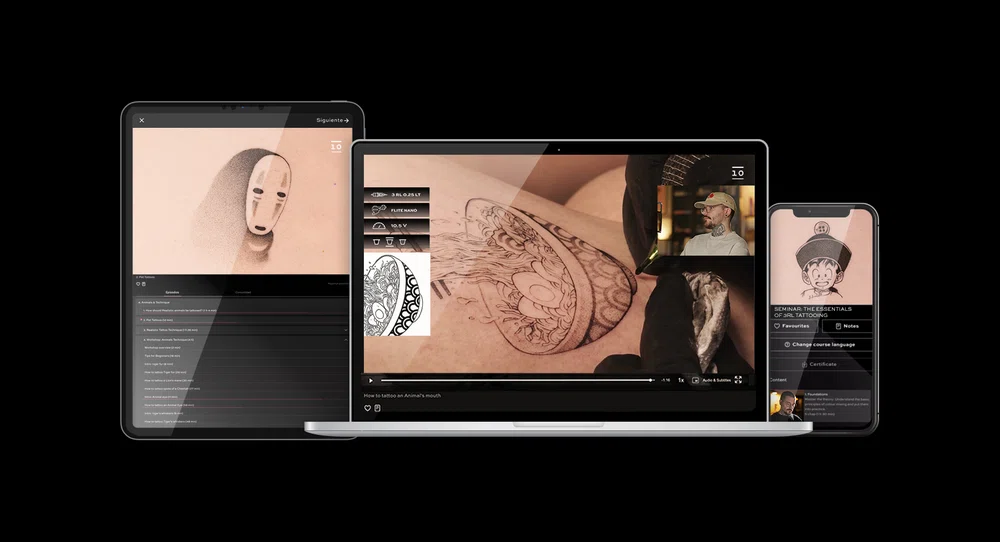Anime, Manga, and Comic Tattoos
History, characteristics, and standout artists
17 April 2024
If there's one thing that characterizes Japanese culture, it's the vast collection of stories, mythologies, and characters depicted through different formats.
Its impact both locally and globally is undeniable. The way it tells and portrays stories has captivated thousands of enthusiasts, even shaping entire generations.
Such is the fanaticism and consumption of these Japanese art forms that conventions are getting smaller by the day, and the demand for tattoo artists specializing in this theme has skyrocketed in recent years.
So, if you're an Anime, Manga, or even Comic geek, you'll be interested in reading on to discover the opportunities that await you if you decide to specialize in this style.
History of Japanese Manga
Let's start from the beginning.
The term "Manga" was first used in 1798 to describe the illustrated book Shiji no Yukikai by Santō Kyōden.
But its history goes back much further to the 12th and 13th centuries with the appearance of scrolls written from right to left. Between 1603 and 1867, during the Edo period, another illustrated book called Toba Ehon appeared and adopted the concept of Manga.
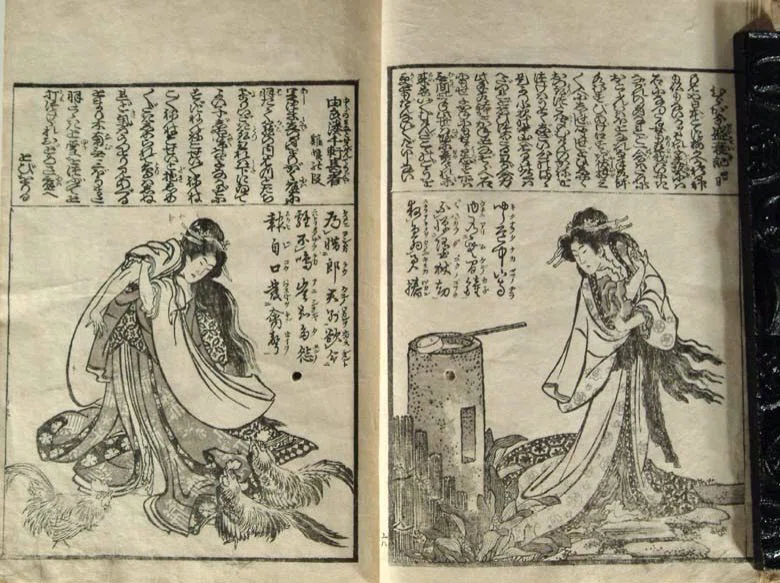
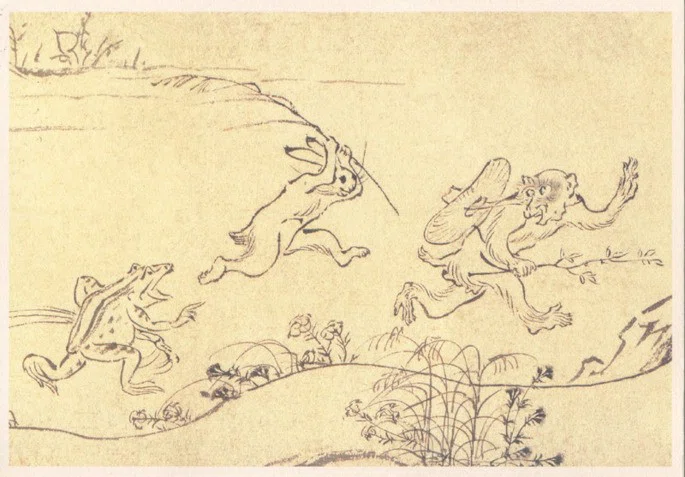
Even in the XXth century, we can already find these illustrations on scrolls, often very long (between 9 and 10 meters long) which were seen in landscape. These drawings are known as Emakimono or Emaki, and they were sequential images that told stories of all kinds.
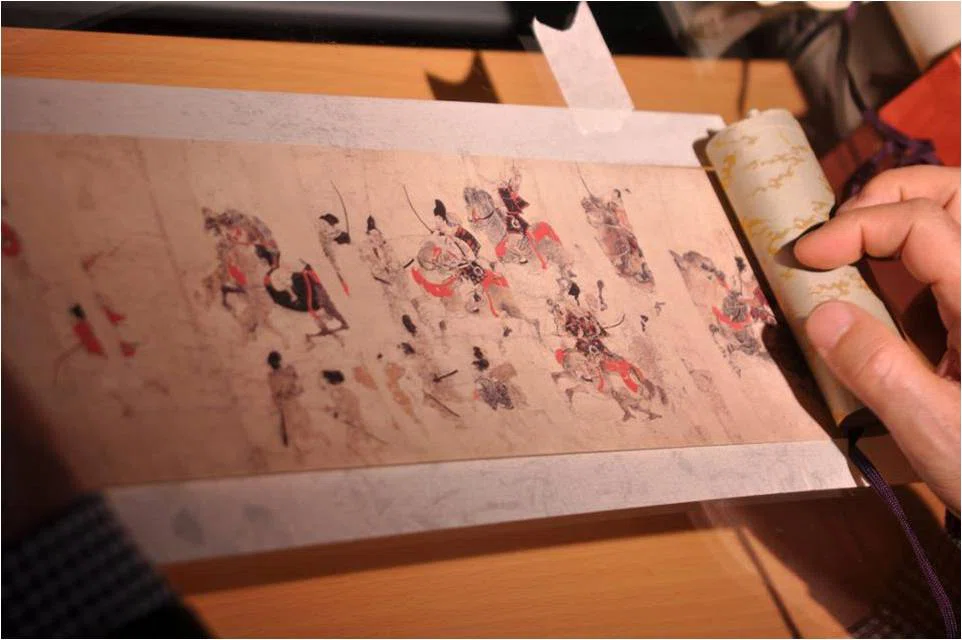
But the popularity of Manga, as we know it today, came with the arrival of characters from the West in Japan, and between 1945 and 1952, during the postwar period, with the American occupation of the country.
Before that, Manga were more like satirical drawings of anthropomorphic animals painted with ink and brush on paper.
Although any art that referred to war and Japanese nationalism was banned, this did not specify the inclusion of Manga. So, Japanese artists were able to give vent to their creativity and development of their own style during those years and after the occupation.
From the expansion of Manga and its influence on the avant-garde of the middle of the last century, there were two that became very popular, Astroboy (1951) by Osamo Tezuka and Sasae-San (1946) by Machiko Hasegawa, and were key to the comic industry.
Subsequently, several types of Manga were created for the different kinds of consumers, creating styles such as:
- Kodomo Manga, children's themes and fantasy stories for the little one.
- Shonen Manga aimed at adolescent boys, with situations full of action and humor with male protagonists.
- Shojo Manga aimed at teenage girls, where they generally refer to human and sentimental relationships.
- Seinen Manga for young and adult men.
- Josei Manga for young and adult women.
Characteristics of Modern Manga
- The opposite of Western reading
- The morphology of the characters and objects designed with great resemblance to reality.
- The use of large and very expressive eyes.
- The themes that almost always swing from between romance to action, science fiction and fantasy.
Among the best-known current Manga we have One Piece, Detective Conan, Dragon Ball, Naruto, and Death Note among many others that we can also remember as animated series.
With the rising trend, it's normal to come across more and more tattoos referencing these iconic characters every day. And it's wise to consider specializing in this niche...
So, if you're interested in pursuing this style, start by thoroughly studying its characteristic features and practicing how to draw them, as what is most valued here is faithful representation and creativity when it comes to capturing them.
Origin of Anime
Anime is a type of Japanese animation, either hand-drawn or produced digitally.
The beginnings of anime date back to the early years of the last century, when it was known by the name of Senga Eiga, which literally means "animated line movies", and later, it was known as Doga, which means "moving images".
It was around the mid-century that it began to be known as Anime.
This conceptual change, when naming this movement, was an important step to consider them within the classic audiovisual narratives.
The confusion that often arises between Manga and Anime is because many Manga became successful animated series. Similarly, many Anime extended to Manga.
Originally, animators worked by hand, frame by frame, to achieve the illusion of a moving image in the combination of infinite drawings, which required very precise skills.
But currently, they also use digital tools, sometimes even solving everything with them, which allows, above all, to streamline work and respond to the high demand for current production.
Anime, Manga and Comic Tattoos
Honestly, we could write an entire article about this eye-catching art, but let's get to what interests us as tattoo artists.
Just as there are excellent illustrators for comics and animations, there are also tattoo artists who excel at portraying them. Just to mention a few characteristics that make them so appealing:
- They use vivid and striking color inks.
When we think of tattoos in this style, we almost automatically visualize them in color since it's a characteristic trait of Manga and Anime; and it would be logical for tattoos to represent them that way. But there are exceptions. - Many clients and artists opt for black and white.
It would also be natural to imagine these tattoos in black and white since monochromatic references are also abundant. Although some prefer it more for aesthetic reasons. - They faithfully represent the original drawings.
Accuracy in strokes, shapes, and colors is crucial when tattooing since the client seeks to replicate their favorite characters exactly. - They usually portray the faces and bodies of the characters.
That's why it's so crucial to study them well. While some prefer to add context, such as significant elements, a specific setting, or a particular scene, what is usually prioritized is the morphology of the character. - The use of techniques is very varied.
That it must be faithful to the original doesn't mean it can't be portrayed in many ways. With a wide range of techniques and creative possibilities, the same character or scene can be resolved differently, depending on the client's preferences and the artist's style.
But let's stop describing and see for ourselves all that you can achieve with this rich and versatile theme.
Below, we'll mention just a few, as the list is very extensive. Whether you know them or not, their work is remarkable and worthy of being shown. Shall we take a look?
Artists in Black & Gray
Monlix
This Spanish artist, based in Barcelona, creates his works with a variety of creatively fused techniques to achieve texture, volume, and depth using only the 3RL needle.
Would you have guessed that these tattoos are made with the same needle, machine, ink, and voltage?
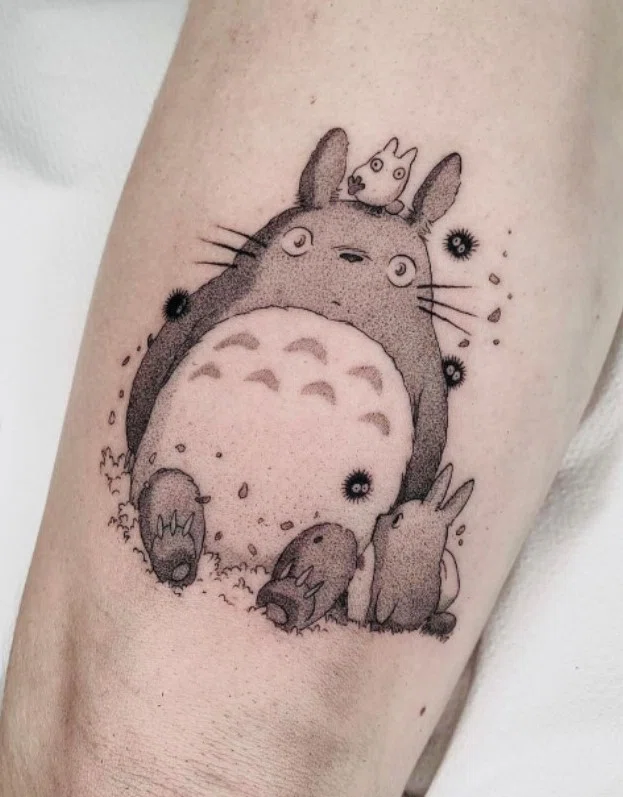

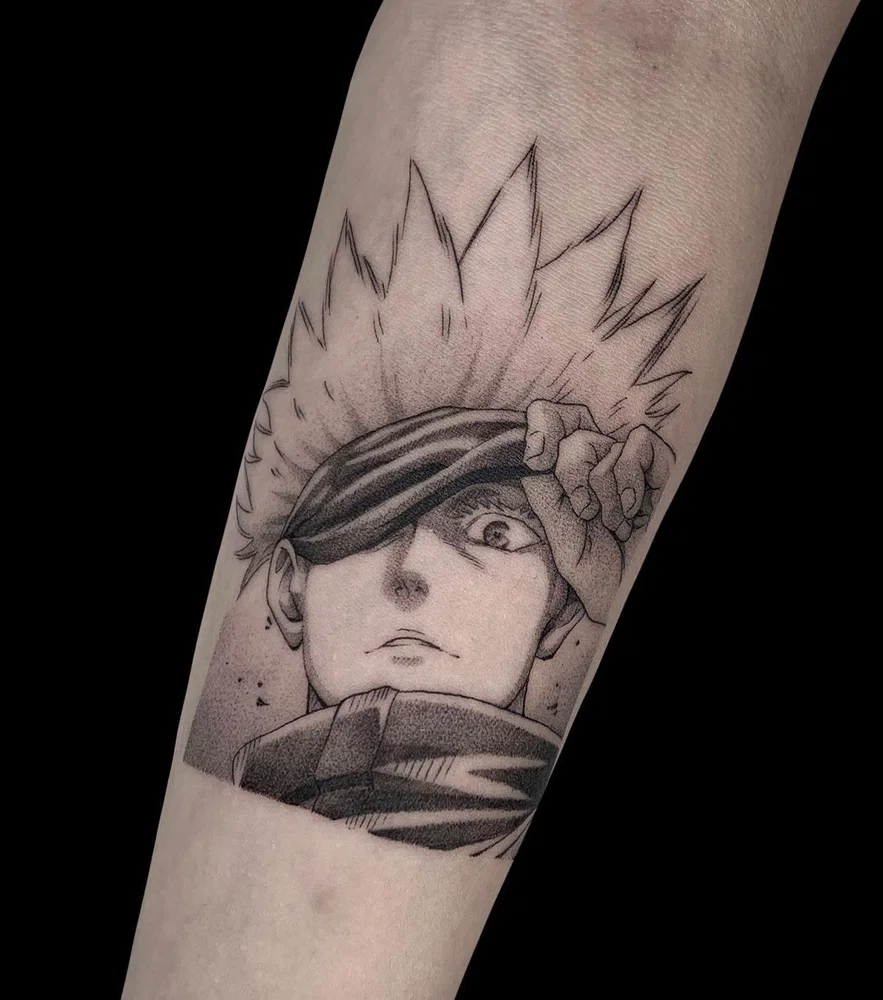
Ink Mali
This is an artist from Rio de Janeiro who also bases his work on techniques such as dotwork and cross-hatching, but with thicker and more defined finishes instead of applying constructed lines.
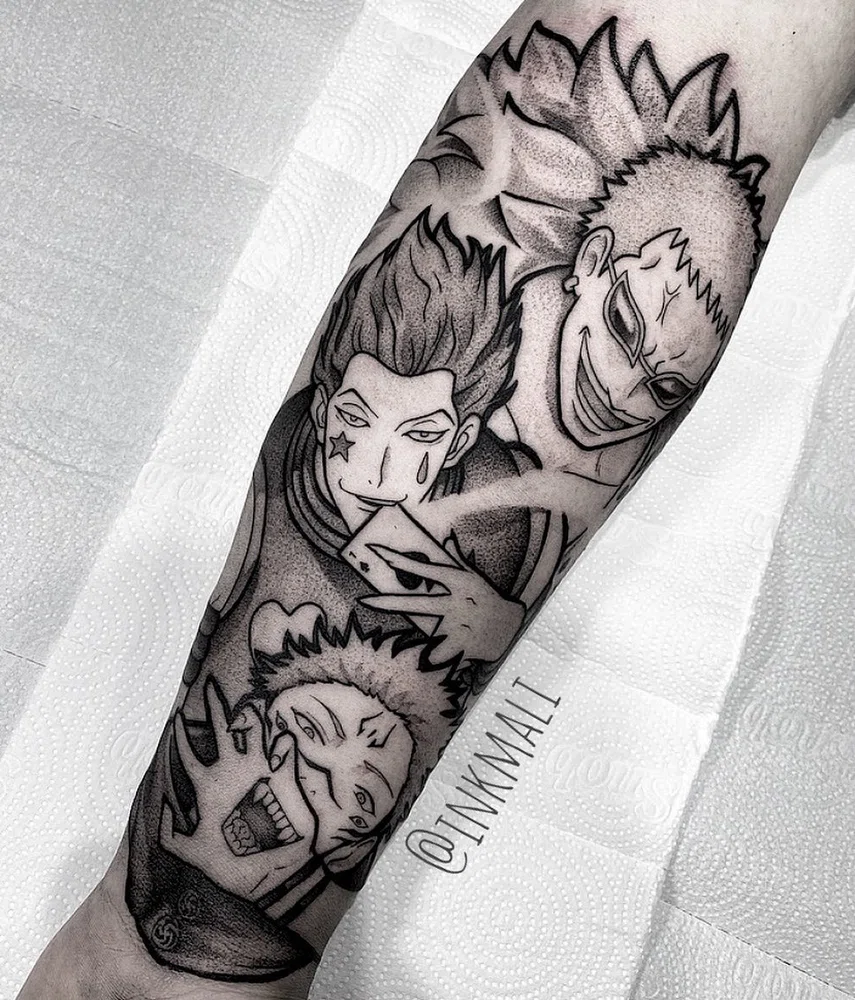
Yokai
This is a French artist more dedicated to what is known as the Fine Line technique. A truly neat work.

Artists in colour
Brandon Chiesa
Impossible not to think of this artist as the first choice in the world of colour otaku tattoos. He is one of the best known in this style, and his original designs stand out in the market.
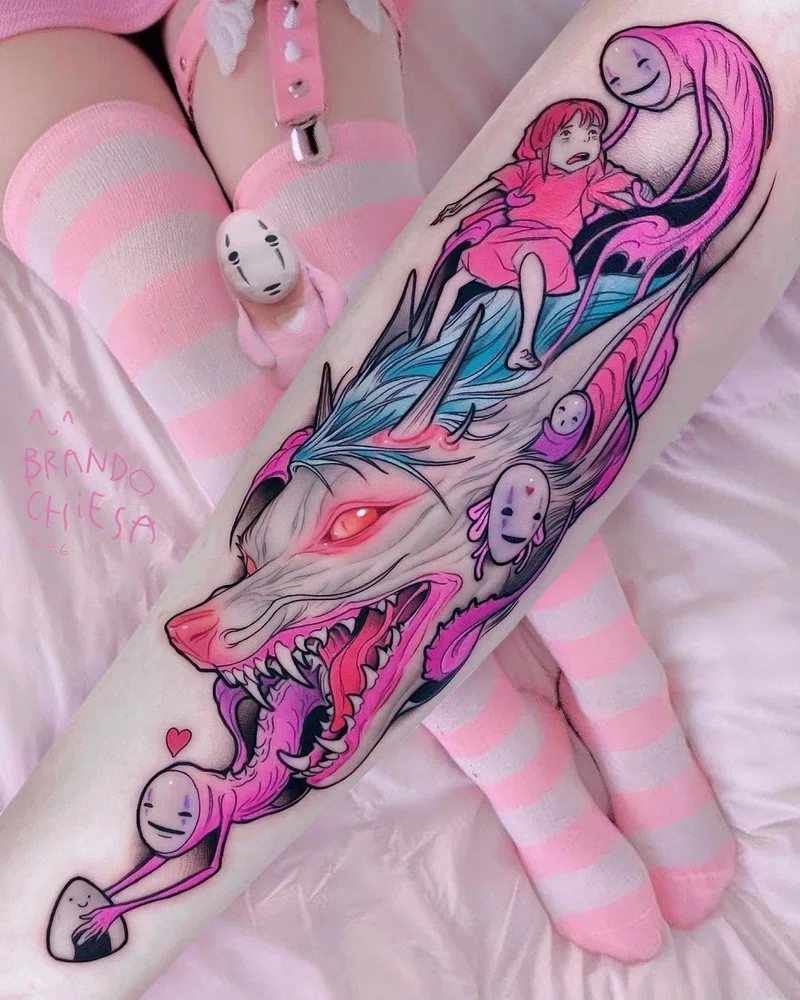
Laura Anunnaki
Laura Aguilar, better known as Laura Anunnaki, is a pioneer in this style, recognized for her use of colors and designs full of personality.
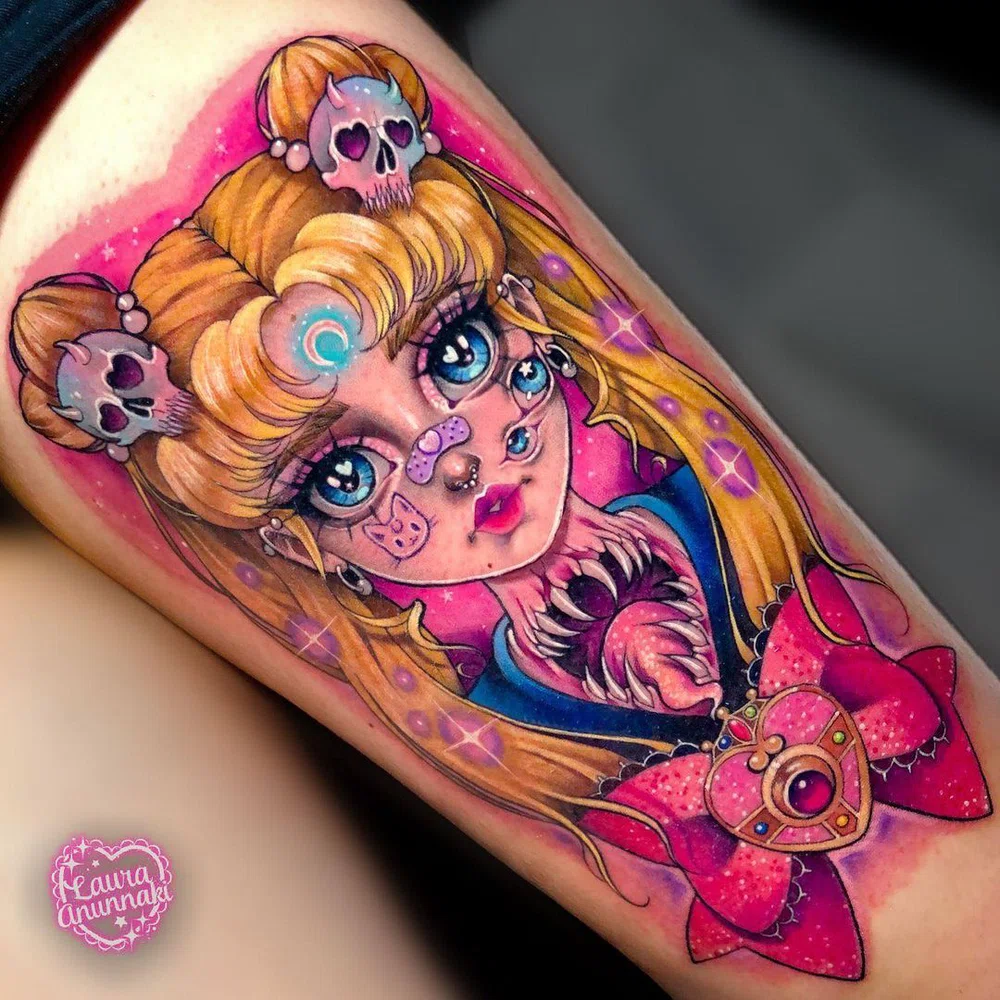
Isnard Barbosa
He is an Irish artist who usually takes the original designs more towards the New-School, with a notable technique and colors.
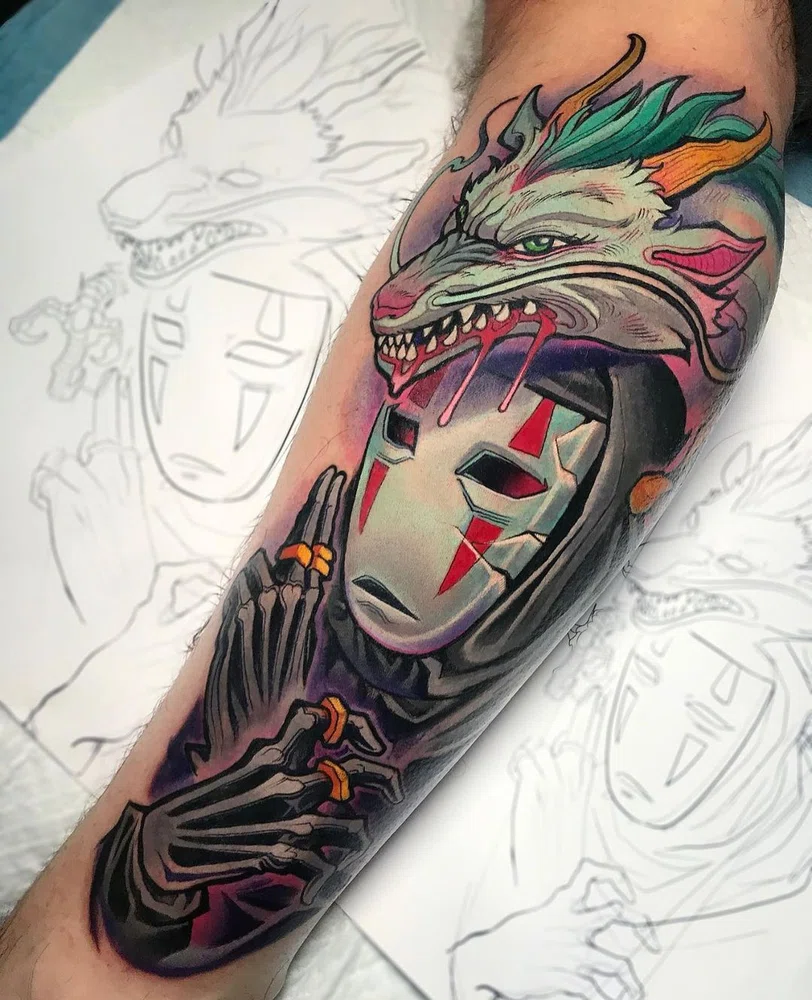
Micheila Bottin Ackerman
She is an Italian artist based in New York. Another great work worthy of highlighting.
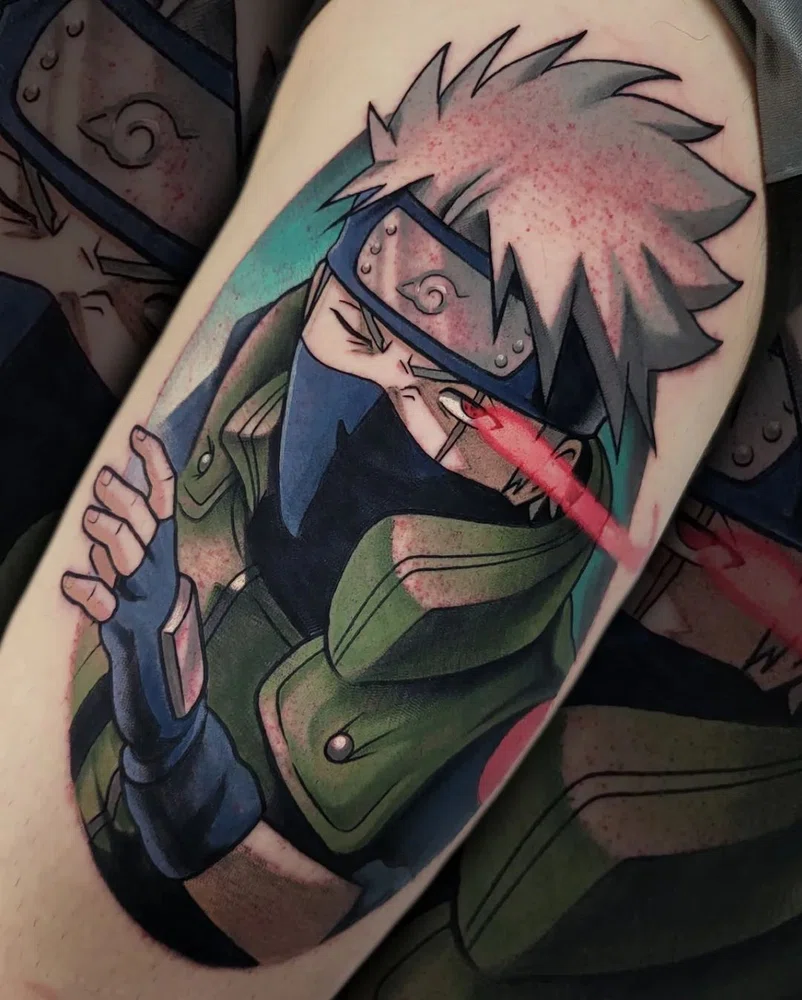
And we close this mention section with two other great artists, although we'll tell you right away that this list falls very, very short.
Kimberly Graziano
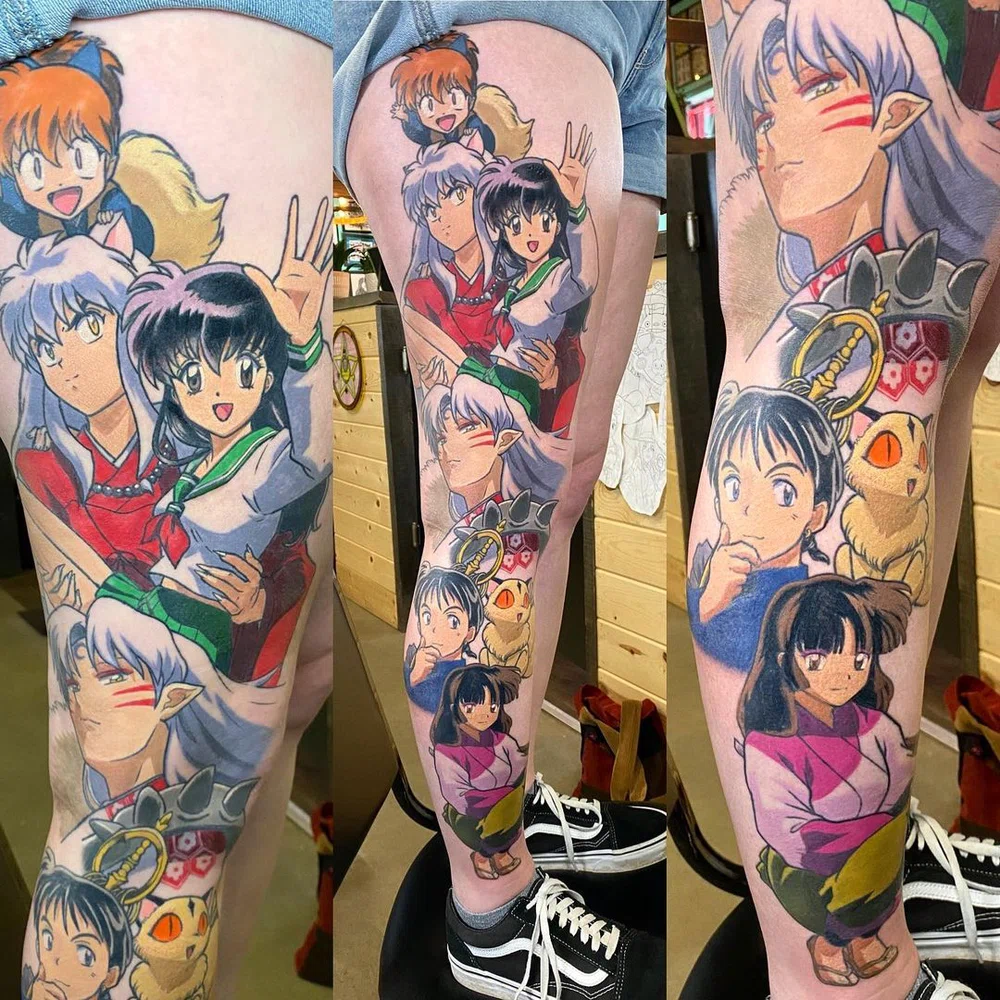
A Style with Great Job Opportunities
The fever for this world has grown exponentially in the last decades, and each day more fans are willing to carry iconic scenes on their skin.
You may be wondering if, with so much competition, there's still room to specialize in tattooing Anime, Manga, Comics, or Illustrations...
Well, let us tell you that this is just the beginning! The global tattoo market is on the rise; several studies have already revealed that it has grown like never before in the past few years, for numerous reasons.
Not only are tattoos increasingly accepted by society, but worldwide exposure thanks to social networks, aligned with the groundbreaking evolution in equipment and supplies, has meant a game-change for this profession. We are in the modern era of tattooing, and there has never been as high demand as today.
And that's why it's so crucial to stand out with your hallmark, the one that distinguishes you and makes a tattoo recognizable as yours instantly.
So, what better way to stand out and express yourself than by portraying what you love most?
If it excites you to tattoo your favorite characters or panels, you might as well take advantage of this wave to specialize in a niche that's not only highly sought after but also adapts to a wide variety of styles and techniques.
Roger Monlix can assure you that it is POSSIBLE to fill your agenda tattooing what you like your way without fussing over with which needle, machine, ink, or voltage to use every time. And he teaches you everything step by step and in detail in our new addition, specially designed for beginners, Seminar: The Essentials of 3RL Tattooing.
